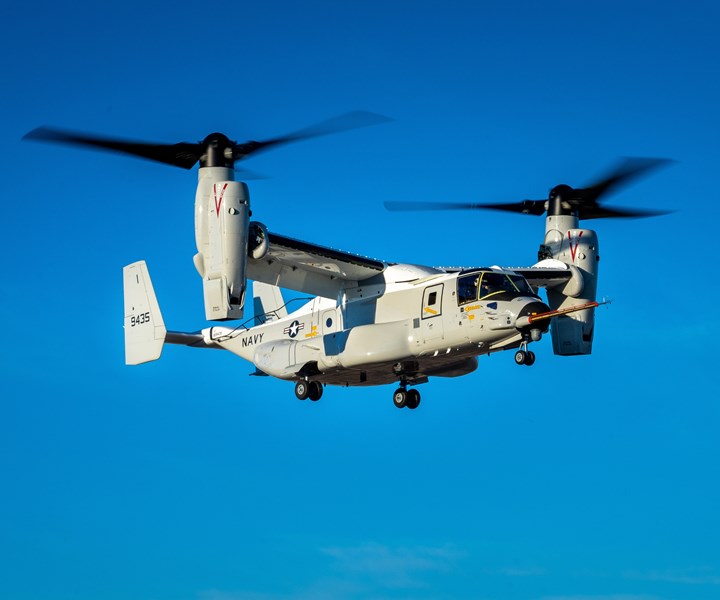Bell Boeing CMV-22B Osprey successfully completes first flight
The CMV-22B is the latest variant of the tiltrotor fleet, joining the MV-22 and CV-22 used by the U.S. Marine Corps and U.S. Air Force.
Share

CMV-22B Osprey tiltrotor aircraft. Source | Boeing
Reported on Jan. 21, the first CMV-22B Osprey tiltrotor aircraft, built by Boeing (Chicago, Ill., U.S.) and Bell Textron Inc., a Textron Inc. (Providence, R.I., U.S.) company, completed first flight operations at Bell’s Amarillo Assembly Center (Amarillo, Texas, U.S.). The CMV-22B is the latest variant of the tiltrotor fleet, joining the MV-22 and CV-22 used by the U.S. Marine Corps and U.S. Air Force.
The U.S. Navy will use the CMV-22B to replace the C-2A Greyhound for transporting personnel, mail, supplies and high-priority cargo from shore bases to aircraft carriers at sea. Bell Boeing designed the Navy variant specifically for carrier fleet operations by providing increased fuel capacity for the extended range requirement. The mission flexibility of the Osprey will increase operational capabilities and readiness, in addition to ferrying major components of the F-35 engine.
“With the ability to travel up to 1,150 nautical miles, the CMV-22B will be a lifeline for our servicemen and women out at sea,” says Kristin Houston, vice president of Boeing Tiltrotor Programs and director of the Bell Boeing V-22 program. “The quality and safety built into this aircraft will revolutionize the way the U.S. Navy fulfills its critical carrier onboard delivery mission.”
Bell Boeing will deliver the first CMV-22B to Air Test and Evaluation Squadron (HX) 21 in early 2020 for developmental tests.
Related Content
-
Composites manufacturing for general aviation aircraft
General aviation, certified and experimental, has increasingly embraced composites over the decades, a path further driven by leveraged innovation in materials and processes and the evolving AAM market.
-
PEEK vs. PEKK vs. PAEK and continuous compression molding
Suppliers of thermoplastics and carbon fiber chime in regarding PEEK vs. PEKK, and now PAEK, as well as in-situ consolidation — the supply chain for thermoplastic tape composites continues to evolve.
-
Plant tour: Middle River Aerostructure Systems, Baltimore, Md., U.S.
The historic Martin Aircraft factory is advancing digitized automation for more sustainable production of composite aerostructures.

.jpg;width=70;height=70;mode=crop)














